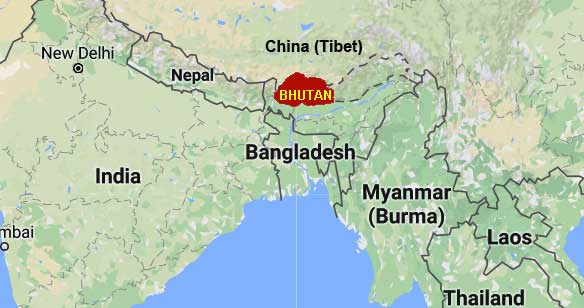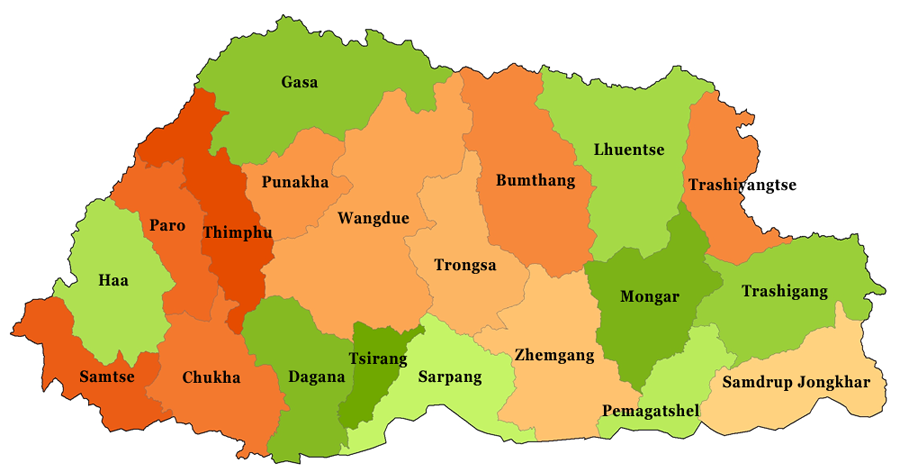
Gaki
Tours and Travels

Gaki
Tours and Travels
Most of Bhutan's culture and traditions draw essence from Buddhism. Bhutan's traditional culture is alive in its performing arts, such as dance and music, which are integral parts of ceremonies and festivals all over the country. Gho and Kira are the traditional dress of the people of Bhutan. Though the dresses are a part of their cultural identityThe men in Bhutan adorn themselves in a knee-length, robe-like cloth which is wrapped around their bodies and nicely secured with a belt. Known as 'Gho', The Kira is the traditional attire for Bhutanese women, consisting of a long, ankle-length dress that wraps around the body. Made from beautiful fabrics, the Kira is typically worn over a long-sleeved blouse known as a Wonju.
Bhutan has Four season in a year
I.Winter- It starts from December to February. During the winter months the weather in Bhutan is colder with temperatures comfortable in the day. southern part of the country enjoys a moderate winter, the northern part of the country gets shrouded with thick layers of snow.
II.Spring- it starts from March to may. Spring in Bhutan is synonymous with the breathtaking bloom of cherry blossoms. The hillsides come alive with delicate pink and white petals, creating a magical landscape that attracts photographersMost of the places experience light rainfall towards the end of the spring month
III.Summer- It starts from June to august. Summer in Bhutan offers a unique experience of
abundant rainfall and lush greener
IV.Autum- It starts from September to November, which is also considered the best time to visit Bhutan. The country also hosts various festivals during the Autumn. most of the places become yellow as it's the time for harvesting and also the leaves on the deciduous become yellow before they shed off in winter.
The economy of Bhutan is based on agricultural , tourism and hydropower
i.agriculturalA significant portion of the population is engaged in agriculture, providing livelihoods to many rural families. Agriculture ensures food security by producing rice, maize, and vegetables, which are staples in the Bhutanese diet. Bhutan exports agricultural products, such as fruits, vegetables, and dairy, which contribute to foreign exchange earnings. Agriculture is integral to Bhutanese culture and traditions, influencing festivals and community life, which in turn supports local economies. Overall, agriculture is foundational to Bhutan’s economic stability and growth, supporting both rural communities and the national economy.
ii Tourism Tourism was introduced to Bhutan in 1974 by Bhutan's former King, Jigme Singye Wangchuck. For a small landlocked country like Bhutan, tourism plays a very important role in generating employment opportunities and revenue. It has also contributed to employment and created income opportunities through the development of locally owned and operated private-sector enterprises.
iii.hydropower-Bhutan generates significant revenue by exporting hydropower to neighboring countries, particularly India. This trade not only boosts government income but also supports infrastructure development. Hydropower is a renewable energy source, aligning with Bhutan's commitment to environmental sustainability and carbon neutrality. This attracts investment in green energy projects. Hydropower projects often lead to improved infrastructure, such as roads and telecommunications, benefiting local communitiesProfits from hydropower can be reinvested into other sectors, helping diversify the economy and reduce vulnerability to external shocks. Overall, hydropoweis central to Bhutan's economic strategy, promoting growth while prioritizing environmental sustainability.

